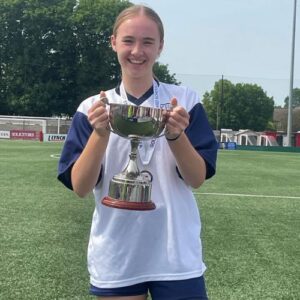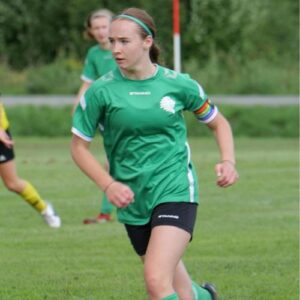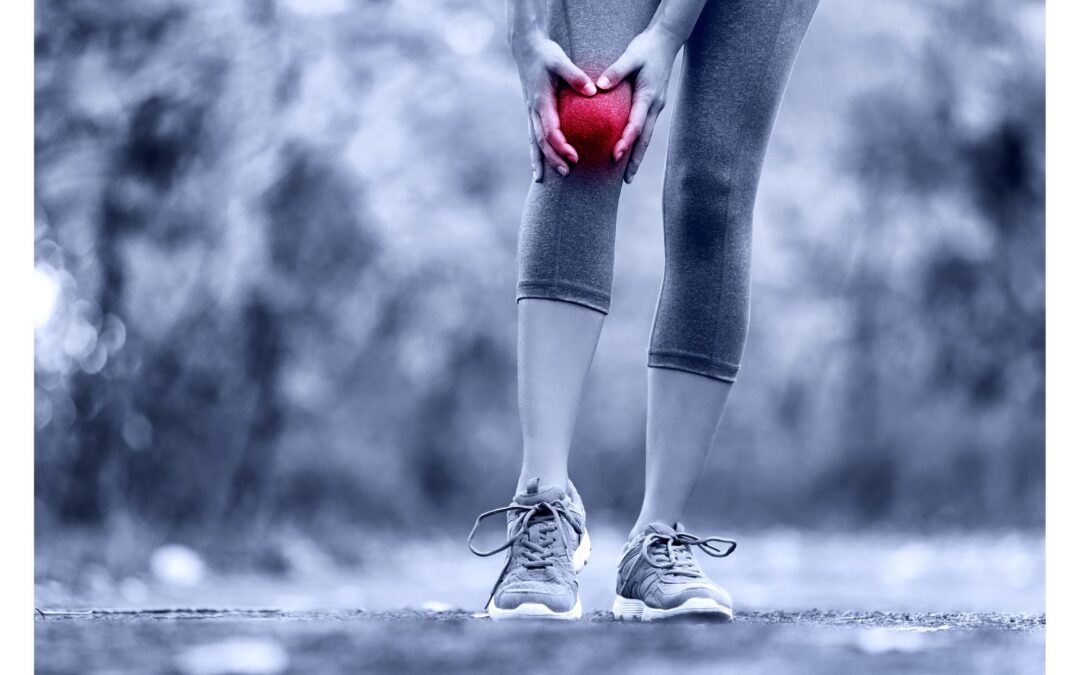Been hearing the headline ‘ACL knee injury’ a lot in the news recently? Let’s talk about it…
In the knee, there are 4 different ligaments. These include ACL, MCL, LCL and PCL. Together, the ligaments in the knee stabilize the joint, attaching the femur (thigh bone) to the lower leg (tibia). Each ligament has a different role in knee stabilisation, such as the ACL restricting knee rotation and forward knee movement.

These ligaments are frequently injured in sports. Common mechanisms of injuries include:
– a direct blow to your knee or knock into something with your knee.
– a knee may be moved beyond its usual range of movement. For example, this can happen during a fall, if you land awkwardly during sport, or after a sudden twisting or movement.
All ligament tears follow the same grading system:
Grade 1: An injury with no instability.
Grade 2: There is more motion than normal, but with a clear endpoint on manual tests.
Grade 3: Instability with a lack of end point on manual tests.

Avulsion fracture: When the ligament is stronger than bone, causing the ligament to pull and fracture the bone. This is common in adolescents.
Ligament tears are commonly paired with meniscus injuries. Due to the lack of blood supply to cartilage, meniscus tears take longer than ligaments to heal or may never completely heal without surgery.
ACL knee injury and women’s football
The most common knee ligament injury is an ACL knee injury. At the moment, the number of ACL tear cases is being investigated in women’s football, as recent studies show that there is a 1 in 20 chance that a female footballer will tear their ACL, per year. This is more than 8x the risk of a male footballer tearing their ACL.
Most recently in the news, we saw Chelsea Women’s star player Sam Kerr undergo surgery ofr her ACL knee injury just last month and will be missing the Paris Olympics as a result. Arsenal starlets, Beth Mead and Vivianne Miedema, discuss their journey to recovery from ACL knee injury in this documentary:
https://www.youtube.com/watch?v=pqN-cHAhT5Q&list=PLvuwbYTkUzHdzmznUROKTtcWAch7_w2wl&index=2
The next most common knee ligament injury is MCL injuries. These injuries often occur alongside ACL and meniscus injuries. There is a slightly lower recovery time when compared to ACL injuries due to restraining a different load and blood flow.
Studies show that knee ligaments can heal with and without surgery, however surgery is common on grade 3 ligament tears. Grade 1 and 2 tears usually heal with rehabilitation and time.
During the early stages of healing, cryotherapy can help to reduce pain, swelling and aid the healing process. Cryotherapy can also be used in the immediate postoperative period of ACL reconstruction, to reduce pain and improve range of motion of the knee, as proven in a study by Camila Dambros et al 2012.
ACL Case Study – Charlton Athletic Women’s U15’s Football Player
Our client Bethan Thomas suffered an ACL tear in September 2023, whist playing football for Charlton Athletic Women’s FC U15s. Her knee swelled immediately, so she came to Cryojuvenate UK to have Local Cryotherapy to help to ease pain and reduce swelling. After an MRI, it was confirmed that Bethan had a complete ACL tear (Grade 3), meaning that surgery was imminent.
Pre-operation, Bethan worked with the WSL Championship side to strengthen the muscles around her knee to best prepare her for the operation in November. This invasive repair involves taking a portion of the hamstring tendon and replacing the ACL with the tissue. The hamstring tendon is specifically used in this operation, as it is up to 3 times stronger than a normal ACL as well as being more flexible, which reduces the chances of re-injury.
After her surgery, Bethan continued to use local cryotherapy to ease pain and inflammation ; which in turn increases range of motion in the joint. This treatment also helps with her swelling that may be caused by her injury rehabilitation schedule, organised through her club’s physiotherapists, sports therapists and strength and conditioning coaches.

We asked Bethan a few questions about her experience so far; Bethan is a football player who plays centre back and has currently ruptured her ACL while playing. Beth currently plays for Charlton U15s, England U16 Independent Schools, Kent Schools U16, and the Junior Premier League U15 representative team.
Bethan ruptured her ACL while playing against West Ham U16s where she got her foot stuck in the ground and twisted her knee. She knew straight away that she had torn her ACL as she heard a pop as soon as she had done it. This injury made her feel devastated as she knew this would mean she would be out for the rest of the season and that she could potentially require surgery. She didn’t know how to react when she first injured her knee as she has never had to take time away from football before.
Bethan had to have surgery where she had to have a complete reconstruction of her ACL, they took a hamstring graft from the same leg to rebuild the ruptured ligament. Bethan’s recovery to return to playing football is likely at least 12 months post-surgery.
Bethan has started her post-surgery rehab, which is going well. She has regained full range of motion in her knee and is now able to start strengthening the ligaments and the muscles surrounding her knee. She is receiving support from her school with her rehab as well as making sure she is still involved within school sport, as well as seeing the physio at Charlton on a weekly basis before her operation.
Below is an account of Bethan’s experience at Cryojuvenate and how cryotherapy has helped her with her progression and start of her recovery process

Q? How has the localised cryotherapy helped your AC L knee injury?
The localised therapy has massively helped reduce my swelling, especially before my operation where it was crucial that there was minimal swelling otherwise the surgery becomes increasingly difficult.
Q? Would you recommend cryotherapy to other people with the same injury?
100% even now when I’m doing my exercises, my knee can tend to swell, and I personally think that Cryojuvenate has been a great way to control that swelling and allow me to continue working on my rehab.
Q4? Do you have any advice for anyone with an ACL knee injury?
If I was to give advice to someone struggling with the same injury I would say: stay patient, this is an injury with a long recovery time, there are a lot of boxes you must tick before you can return to your sport and unfortunately to start with, they are incredibly tedious exercises. As well as this I would suggest that you try and stay involved in your sport; whether that means taking a more managerial role or just supporting your team from the sideline, making sure you stay in that environment and feel a part of your team is key for your rehab in a psychological sense.






